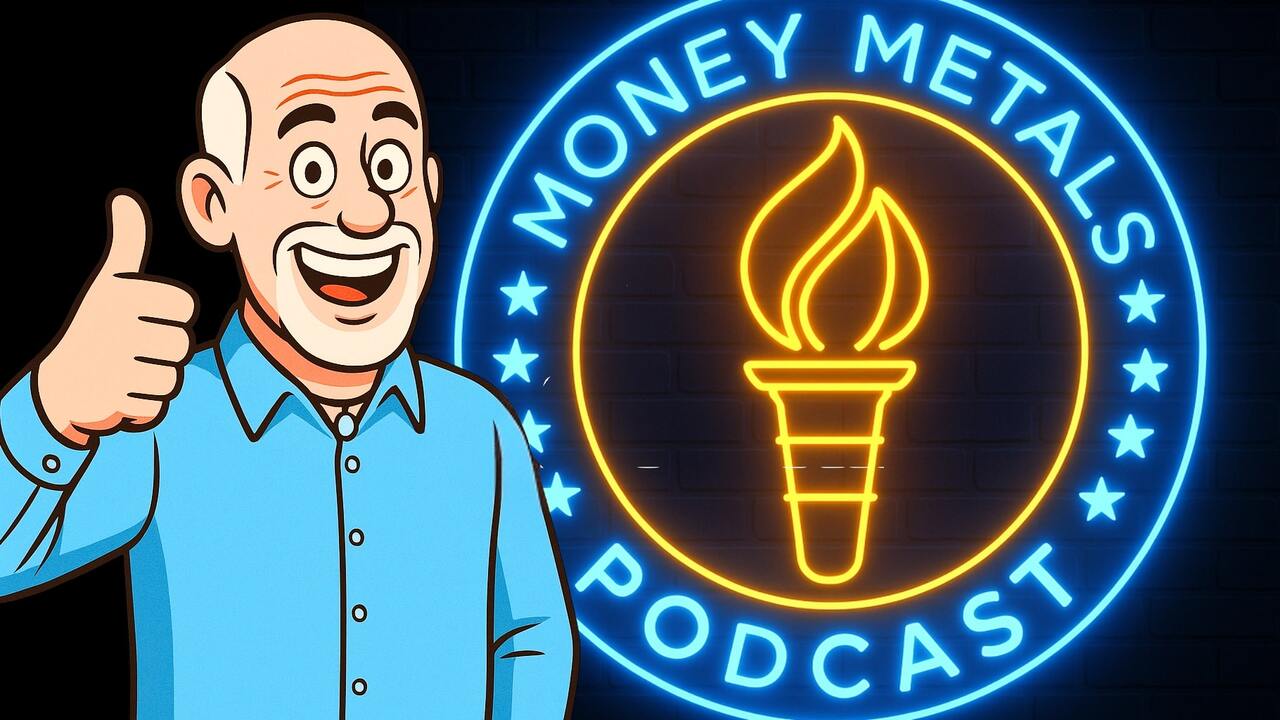(Money Metals News Service) Even while vacationing in California for a hockey tournament, Money Metals Midweek Memo host Mike Maharrey stayed loyal to his audience, delivering another insightful “Ask Mike Anything” episode.
Pre-recorded just before his trip, Maharrey tackled a range of questions from listeners—covering gold storage, interest rates, debt markets, inflation, and even Fort Knox.
How to Store Gold Safely at Home?
The first question addressed home gold storage. Maharrey emphasized that while storing gold at home offers personal control, it introduces security risks. Key recommendations included:
- Invest in a heavy, high-quality safe, not a cheap model from a big-box store.
- Bolt the safe to the floor or wall to prevent theft.
- Do not rely solely on hiding places—thieves know common spots.
- Get insurance for your precious metals.
- Avoid discussing your holdings publicly, especially online.
He noted that Money Metals Exchange offers a fully insured, segregated storage facility—larger than Fort Knox and located outside of New York—for those preferring vault storage over in-home options.
How Do Low Interest Rates Increase the Money Supply?
A common economic misunderstanding prompted Maharrey to explain how artificially low interest rates lead to monetary inflation—even without quantitative easing (QE).
- Fractional Reserve Banking allows banks to lend out a significant portion of deposits, typically keeping only 10% in reserve.
- When the Federal Reserve lowers interest rates, borrowing becomes cheaper, increasing demand for loans.
- More lending = more money creation, as each loan becomes a new deposit that can be loaned again.
He pointed out that even modest interest rate cuts have continued to expand the money supply, despite the Fed’s ongoing balance sheet reduction. This inflationary policy mirrors the effects of QE, just through a different mechanism.
Can the U.S. Sell $9 Trillion in Treasuries?
Listener Brian raised concerns about rising U.S. debt and the potential failure to find buyers for a projected $9 trillion in treasuries later this year. Maharrey agreed that:
- Foreign buyers like Japan and China are reducing their U.S. debt exposure.
- With increasing skepticism about U.S. fiscal stability, the Federal Reserve may be forced to resume QE to absorb excess supply.
- Such action could trigger a loss of market confidence, leading to inflation and possibly a major selloff.
- Analysts like David Hunter predict up to an 80% market crash, and big investors like Warren Buffett and Stanley Druckenmiller have stockpiled cash in anticipation.
What Could Cause a Drop in Gold or Silver Prices?
Zach asked what might cause precious metals to drop sharply in price. Maharrey responded:
- A tightening of monetary policy, such as renewed interest rate hikes, could lead to a short-term dip.
- For silver specifically, which derives over 50% of demand from industrial use, technological changes (e.g. alternatives to silver in solar panels) could reduce demand and drive prices down.
- A sudden new supply discovery is unlikely to crash prices due to the long development timeline in mining.
Despite these hypotheticals, Maharrey remains bullish, citing ongoing dollar devaluation as a long-term driver for higher metal prices.
Is There Really Gold in Fort Knox?
A listener named Clay asked Maharrey if he believes there’s still gold in Fort Knox. His gut instinct? Yes, but with caveats.
- While Maharrey believes the physical gold is present, he questions the paper ownership—how much of it may be leased or claimed by others.
- The lack of transparency and refusal to conduct a full audit fosters skepticism and weakens public trust.
- If gold were proven missing, it could trigger a major crisis of confidence, weakening the dollar and fueling inflation as foreign holders flee U.S. assets.
What Would Gold Be Worth Under a Gold Standard?
When asked by Timothy about the price gold would need to be pegged at under a renewed gold standard, Maharrey cited estimates from economist James Rickards:
- $10,000–$15,000 per ounce would be necessary to back the money supply adequately.
- The peg could technically be set anywhere, but it must reflect the size of today’s monetary base.
Should You Cash Out a 401(k) for Silver?
Listener Kelly asked whether it’s wise to cash out a 401(k) to buy physical silver, accepting penalties and lost interest. Maharrey was cautious:
- Silver remains undervalued—the gold-to-silver ratio is around 87:1, compared to a historical average of ~60:1.
- Still, silver’s volatility and industrial dependency make it riskier.
- Rather than liquidate a retirement account, Maharrey suggested exploring a self-directed precious metals IRA, which allows tax-deferred investment in physical metals without penalties.
Are Tariffs Enough to Trigger a Recession?
Jeffrey’s question about tariffs and recession risk prompted Maharrey to say tariffs could indeed act as the “pin” to pop the economic bubble—but they’re not the root cause. He attributed systemic weakness more to:
- Monetary and fiscal malfeasance
- Rising debt servicing costs
- Persistent inflationary pressure
Tariffs may serve as a catalyst, but they are not the underlying driver.
Final Thoughts: Fire Insurance Before the Fire
Maharrey closed by encouraging listeners to think of gold and silver as financial fire insurance—assets you want to hold before the next crisis, not after. With sideways trading patterns suggesting consolidation, and experts like Jordan Roy-Byrne forecasting a prolonged inflationary era, now may be the ideal time to accumulate precious metals.
For more resources, listeners can call 1-800-800-1865 or visit MoneyMetals.com.

